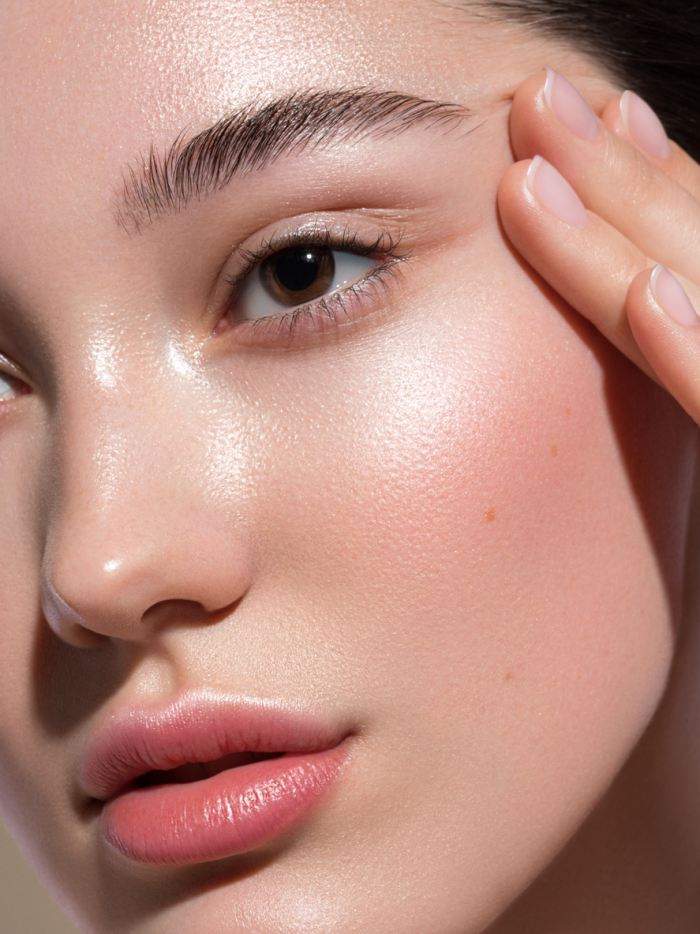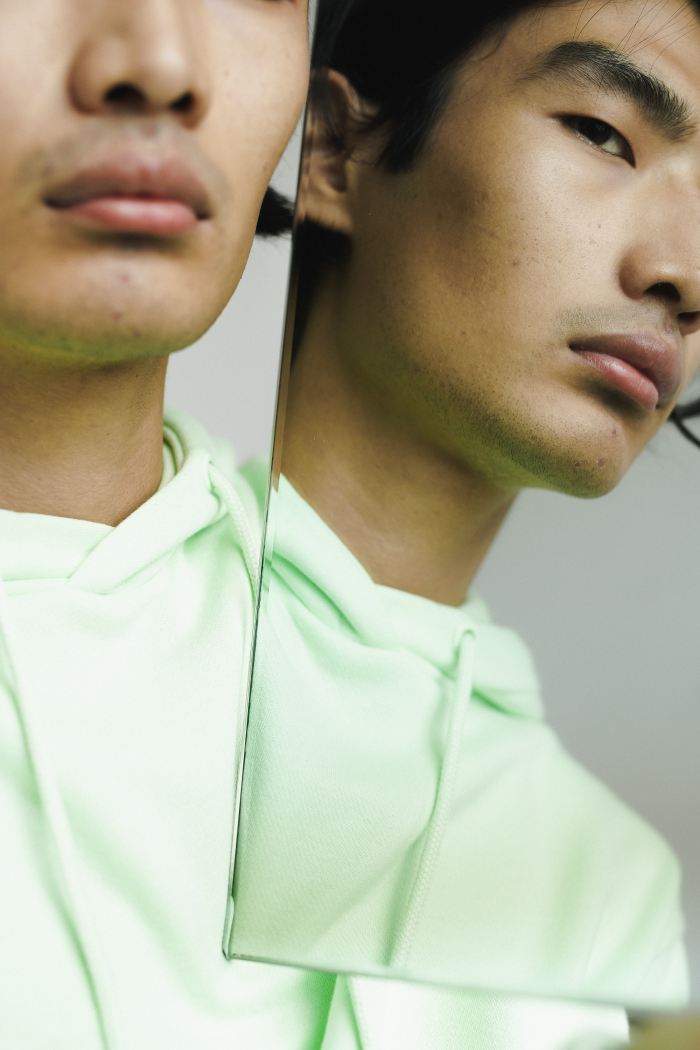Botox® treatment in Munich
Natural results that speak for themselves
Whether you have already decided in favor of undergoing treatment with botulinum toxin or would like a consultation, we are here for you. You can book your appointment conveniently either online, by phone or by email. On this website, we inform you in advance in detail about everything you need to know about Botox® as well as our safe and gentle methods.
The advantages of visiting the practice of Dr. Timm Golüke
- Long-standing experience
- Natural results
- Distinguished dermatologist


What is Botox®?
Botox® is the most well-known brand name for the active ingredient botulinum toxin. Botulinum toxin has been used in medicine since the '70s and in aesthetic medicine since the '90s.
Botulinum toxin is a protein that blocks the transmission of signals between nerve cells and muscles. This means that the muscle in question does not receive a signal to move and remains relaxed. Botox® does not paralyse the muscle, it simply does not activate it.
This effect is used in neurology to treat disease-induced muscle spasms, especially in children.
In aesthetic medicine, botulinum is used under the brand name Botox®, among others, to selectively relax facial muscles. This smooths out expression lines. Botulinum toxin treatment in this form – famously known as Botox® treatment – is one of the most common aesthetic procedures today.
What Botox® can do and what it can't
Botox® can smooth out expression lines
Botox® can make certain muscles stay relaxed. For example, the facial muscles responsible for expression lines. For instance, the "frown line" that is formed when the eyebrows are drawn together. If these muscles remain relaxed, this line smooths out instead of becoming even deeper.
So if the movement of muscles creates and deepens lines, Botox® can provide relief. This makes it the treatment of choice for expression lines.
Botox® can also alleviate chronic migraine and excessive sweating
Botox® is also used to treat chronic migraine and excessive sweating (hyperhidrosis). In the case of chronic migraine, Botox® can reduce the number of days when headaches occur each month. With hyperhidrosis, Botox® brings about significant improvements.
What Botox® can’t do
Botox® cannot fill out or plump up wrinkles. If wrinkles are not caused by muscle movements but by loss of skin tone, for example, Botox® treatment will not be effective. During our consultation prior to each Botox® treatment session, our doctors will precisely clarify this with you. If necessary, they will then recommend and expand upon alternative forms of treatment to Botox®.
Botox® against wrinkles
Botox® is extremely well suited to treating expression lines. These are lines that are formed and intensified by muscle movements in the face:
- Furrows (""worry lines")
- Lines between the eyebrows ("frown lines")
- Laughter lines around the eyes ("crow's feet")
- Wrinkles on both sides of the nose ("bunny lines")
- Certain wrinkles on the chin ("cobblestone lines" or "chin bossing")
By relaxing the specific muscles that cause the wrinkles, existing wrinkles are smoothed out. It also prevents them from deepening.
Botox® is also of particular interest for treating wrinkles caused by unconscious muscle movements. For example, when people frequently raise their brow or draw their eyebrows together while concentrating. Botox® treatment can minimize these unconscious, wrinkle-forming movements.
Not quite sure whether the wrinkles you would like to have treated are actually expression lines? Don't worry. At the practice of Dr. Timm Golüke, every Botox® treatment session is preceded by a detailed consultation. Here, one of our doctors clarifies with you which form of treatment is suitable for your skin and the result you desire.
Botox® against sweating
Specific Botox® treatment reduces excessive sweating, also known as hyperhidrosis. This works because the sweat glands are activated by small muscles. Botulinum toxin prevents these muscles from contracting. As a result, fewer sweat glands are activated, which means that less sweat is secreted.
How Botox® is used against hyperhidrosis
During hyperhidrosis treatment, Botox® is injected into the area where the sweat glands are located. The effect lasts for up to nine months and can be repeated as often as desired.
Important: before Botox® treatment, a doctor needs to have clarified that a case of primary hyperhidrosis is concerned – i.e. not the symptom of another disease.
We will discuss this with you and answer any questions you may have in a personal consultation.
Botox® against migraine
Botox® has been approved in Germany since 2011 for the preventive treatment of chronic migraine. Studies show that treatment with botulinum toxin can reduce the number of days on which headaches occur and the intensity of the pain. Under certain conditions, therefore, health insurance providers will cover the cost of treatment.
Why Botox® helps relieve chronic migraine
Unfortunately, the exact causes of migraine have not yet been conclusively established. What is known, however, is that during a migraine attack, muscles in the head, neck and shoulder area become very tense. This tension can lead to additional pain. Botox® helps in this case because it prevents or restricts the tightening of these muscles.
How Botox® is used to treat chronic migraine
Botulinum toxin is injected into the muscles in the forehead, head and neck. The effect lasts for about three months and can be repeated as often as desired.
In view of the intense level of discomfort and the many supposed miracle cures for migraine, we would like to emphasize one thing: Botox® unfortunately cannot cure chronic migraine. Nevertheless, it can help to alleviate the symptoms. We would be happy to explain this to you in more detail in a personal consultation and answer any questions you may have.
If you would like to read up on the subject in advance, we recommend reading the expert recommendation by the German migraine and headache society (Deutsche Migräne- und Kopfschmerzgesellschaft), "Therapy of chronic migraine with botulinum neurotoxin A" (in German only).

Botox® treatment by Dr. Timm Golüke
What is extremely important to us – and certainly to you too – during your treatment with Botox® is that we place the utmost value on preserving your natural facial expressions. That you appear more relaxed and rested, but still just as likeable and expressive as before the treatment with botulinum toxin. We achieve these natural results by means of a precise, multi-stage procedure.
Step 1: The Consultation
Before undergoing Botox® treatment in our practice, one of our doctors holds a detailed consultation with you. In it, we calmly explain to you the possibilities and limitations of botulinum toxin. We also clarify what results you can expect from the treatment and answer all your questions. It goes without saying that you also receive explanatory documents from us in writing. How you then choose to proceed is entirely up to you.
If you wish, you can opt to have the Botox® treatment carried out right after the consultation or at a separate appointment. You can also decide to opt for a cooling-off period, or not to have the treatment at all. What is important to us is that you are in a position to make a well-informed decision.
Step 2: The day of treatment
On the day of treatment, one of our specialists with an exact knowledge of facial anatomy initially determines exactly which muscles need to remain relaxed in future. The corresponding areas are then disinfected and injected with Botox®.
You should not expect any pain during this procedure. However, we are happy to apply an additional local anaesthetic cream so that you can relax during the procedure.
After the injection, we cool the areas treated to prevent any swelling. After the appointment, which usually lasts 10 to 30 minutes, you can pick up your normal daily routine where you left off. The only things you should avoid on this day are playing sports and taking a sauna or steam bath.
Step 3: The follow-up appointment
After two weeks we get back together for a check-up. This is because we deliberately use a very low dose of Botox® in the initial treatment session. After two weeks, the complete results are visible. We check this at the follow-up appointment and perform a little follow-up work if necessary. This allows us to feel our way towards the perfect individual Botox® dose for you and gently achieve a balanced overall result.
Our Botox® treatment at a glance
- Treatment session duration: 10-30 minutes
- Effective duration: 4 to 6 months (3 months for chronic migraine, up to 9 months for hyperhidrosis)
- Anaesthetic: non required, local anaesthetic on request
- Time off: none, but avoid doing sports or taking a sauna or steam bath on the day of treatment
The effects of Botox®
Botulinum toxins like Botox® block the transmission of signals between the nerve cells and muscles. As a result, the muscle in question does not receive a signal to move and remains relaxed. This does therefore not paralyse the muscle, but simply does not activate it. Since no paralysis is involved, there is also no numbness.
Use of Botox® in medicine
In neurology, the muscle relaxing effect of botulinum toxin is used to treat spasms – disease-induced muscle cramps. In aesthetic medicine, botulinum toxin has become famous under the brand name Botox®. Here it is used to selectively relax the facial muscles and thereby smooth out expression lines.
Why is Botox® regarded as toxic?
The muscle-relaxing effect of botulinum toxin can be dangerous if it is not used in a controlled manner. This is because it can prevent muscles from moving that we humans need to live, for example the respiratory muscles. This is possible in cases of food poisoning, for example.
Good to know: to rule out poisoning, botulinum toxin preparations for medical use – such as Botox® - are extremely diluted. More than 30 ampoules of Botox® would have to be injected at once to cause an overdose.

The side effects of Botox®
Botulinum toxins such as Botox® are among the most researched active agents in the world. When used responsibly, their side-effects profile is highly favorable. This is because the potential side effects are largely mild.
Since the human body produces botulinum toxin, they are also temporary. Long-term side effects of Botox® are unknown. However, botulinum toxin has been used in neurology for decades to treat muscle spasms in children and babies – in higher doses than for aesthetic use.
Possible side effects of Botox® include:
- Redness, swelling and bruising (haematoma) at the injection site
- Slight tightness around the treated areas on the face
- Transient headache after the treatment of worry lines on the forehead
- Hypersensitivity or allergic reaction (very rare)
If you experience other side effects or are unsure whether certain symptoms could be related to your Botox® treatment, simply get in contact with us.
Errors during Botox® treatment
From our perspective, two basic treatment errors can take place when using Botox® for aesthetic purposes: rigid facial expressions as a result of too high a dosage and undesirable effects caused by administering the injection in the wrong muscle. In the following, we will go into more detail and explain how we avoid these treatment errors.
Rigid facial expression and mask-like appearance due to too high a Botox® dosage
Depending on the dosage, botulinum toxin can completely or partially prevent the activation of a muscle. The higher the dose, the stronger the effect – and the more unnatural it looks. Hence, the typical mask-like rigid impression caused by early Botox® treatments due to the higher dosages of the active agent given at that time.
How do we avoid this error: in order to achieve particularly natural results, we at the practice of Dr. Timm Golüke carefully work our way up to the perfect Botox® dosage for you. We purposely use very low dosages during the initial treatment session. When the full effect has been achieved after two weeks, we check the results and inject a little more Botox® if necessary. This way, we achieve natural results which retain the full range of your facial expressions and makes you feel good all round.
Undesirable effects due to imprecise Botox® injections
The anatomy of the human face is complicated. A multitude of muscles are responsible for our facial expressions. It is therefore extremely important to determine precisely which muscle the injection should relax prior to the Botox® procedure. If Botox® gets into the wrong muscle, this can, for example, cause a drooping eyelid or sagging eyebrows for several weeks. These unwanted effects wear off as the Botox® is broken down by the body.
How we avoid this treatment error: as specialists in aesthetic and plastic surgery and dermatology, we have a thorough knowledge of the anatomy of the face and its muscles. Based on this knowledge, we carefully take the time to understand the interaction of the muscles in your individual facial expression. Only then do we determine the respective injection points for treatment with Botox®.
And if something were to go wrong anyway? The adverse effect would abate particularly quickly due to the low Botox® doses we use. Moreover, we would be able to take countermeasures with a balancing after-care treatment at the follow-up appointment.
Botox® or hyaluronan?
Botox® is extremely well suited for treating expression lines. In other words, wrinkles that are formed and made deeper by muscle movements in the face. What Botox® cannot do, however, is fill out wrinkles. In aesthetic medicine, wrinkles are injected with fillers such as hyaluronic acid tor this purpose.
Wrinkles that occur because the skin loses its elasticity – which Botox® can hardly influence – can also be treated with injections, e.g. with hyaluronic acid. These include, for example, drooping corners of the mouth or nasolabial folds.
Good to know: Botox® and hyaluronan can also be combined to treat deeply etched expression lines.
Book online
Reserve your desired appointment now.
Book your preferred appointment easily and conveniently online.
Our practice team is looking forward to seeing you.
Is Botox® right for me?
Botox® is extremely well suited to people who wish to have the expression lines of their face treated. These are wrinkles that are formed and deepened by muscle movements in the face.
Facial expression lines that can be treated well with Botox® include:
- Furrows ("worry lines")
- Lines between the eyebrows ("frown lines")
- Laughter lines around the eyes ("crow's feet")
- Wrinkles on both sides of the nose ("bunny lines")
- Certain wrinkles on the chin ("cobblestone lines" or "chin bossing")
For whom is Botox® not right?
Used responsibly, botulinum toxin is a substance with very few side effects. Nevertheless, there are some people on whom we do not perform Botox® treatments.
We do not perform Botox® treatments on
- Pregnant and breastfeeding women
- People with a proven hypersensitivity to the components of the injection, e.g. to the protein albinum
- People with certain neurological diseases
- People suffering from facial inflammation
- People who have undergone recent treatment with antibiotics
We will be happy to discuss the reasons in more detail in a consultation and recommend suitable alternative treatments.
What course does my Botox® treatment take?
In order to obtain the best results, Botox® treatment at the practice of Dr. Timm Golüke takes place in three steps. You will be looked after by a specialist at every moment from the initial consultation to the actual Botox® treatment itself to the follow-up appointment.
Step 1: The Consultation
- We calmly explain to you the possibilities and limitations of treatment with Botox®.
- We clarify whether treatment with botulinum toxin is right for you and what results you can expect.
- We answer all your questions about Botox® and the treatment.
- You receive explanatory documents from us in writing.
Step 2: The day of treatment
- We determine exactly which facial muscles need to remain relaxed in the future.
- The corresponding areas are disinfected and injected with a low dose of Botox®.
- Usually the injection is not painful, but we are happy to apply a local anaesthetic cream if you wish.
- After the injection, we cool the treated areas to prevent swelling.
- Depending on the extent of treatment, the procedure takes 10 to 30 minutes.
Step 3: The follow-up appointment
- Botox® treatment at the practice of Dr. Timm Golüke includes a follow-up appointment after two weeks, when the full results of your treatment are visible.
- We check how well the low dose of Botox® has worked for you and how satisfied you are with the results.
- If necessary, we inject some more Botox® to achieve a perfect balance of effect and natural facial expression.
Is Botox® treatment painful?
No, because the hypodermic needles used are very thin, similar to those used for vaccination purposes.
You may feel a prick and/or a tiny amount of cool liquid flowing into the area.
If you are still afraid of experiencing pain or the injection, however, just let us know. And don't worry, you won't be the first or the last person to do so. We will then apply a local anaesthetic cream to the treatment area. The needle prick will no longer be a concern for you and you can sit back and enjoy a more relaxed appearance.
How soon will I see the results?
With Botox® against wrinkles
With expression lines, the effect of botulinum toxin sets in one to four days after treatment. The full result is visible after two weeks.
This is why we call you in for a follow-up appointment after the two weeks are up and check the results. If necessary, we intensify the effect with an additional Botox® injection.
With Botox® for chronic migraine
In the case of Botox® treatment for chronic migraine, the effect sets in after two or three days.
For Botox® against hyperhidrosis
Botulinum toxin usually starts to work to alleviate hyperhidrosis after two days. The full effect sets in after two weeks at the latest.
How long does the effect of my Botox® treatment last?
With Botox® against wrinkles
The effect of your Botox® treatment usually lasts for 4 to 6 months. Among other things, the exact duration depends on the dosage used and how quickly your body breaks down the botulinum toxin.
Botox® treatment can be repeated as often as you like. There is no habit forming effect. In fact, on the contrary: with time, leaving larger intervals between treatments often become possible.
With Botox® against chronic migraine
The effect usually lasts about three months and the Botox® treatment can be repeated as often as desired.
In the first year of treatment, 3-month intervals are usually the norm. In the following years, the interval can often be extended to four months.
With Botox® against hyperhidrosis
The effect of botulinum toxin against hyperhidrosis lasts up to 9 months. The procedure can be repeated as often as desired. A longer effect has been observed with repeated applications.
What should I consider before undergoing treatment with Botox®?
Blood-thinning medications such as aspirin promote the formation of haematomas at the injection site. You should therefore stop taking them 2 days before your Botox® treatment appointment.
Important: if you regularly take blood-thinning medication for medical reasons, please discuss this with your attending physician and also with us.
What should I pay attention to after treatment?
You will be immediately "presentable" after your Botox® treatment and will be able to resume your normal daily activities straight away.
Do not have a quick lie down and avoid anything that stimulates your blood circulation
On the day of treatment, the Botox® will still spread slightly under your skin. To stop it spreading incorrectly, we advise you
- Not to lie down for the first 1 to 4 hours after treatment.
- Avoid anything that promotes increased blood flow to the injected areas on the day of treatment: exercise, sauna, steam bath, sunbathing, solarium, lymphatic drainage and massage.
How often can I repeat my Botox® treatment?
Treatment with Botox® can be repeated as often as desired. This is because botulinum toxin is a protein and is broken down by the human organism over time. For this reason, the effect of Botox® wears off after several months – and can be refreshed by administering renewed injections.
By the way, with long-term use of Botox® there is no need to fear a habit-forming effect. On the contrary: the muscle inactivated by Botox® often "learns" to stay relaxed. The intervals between treatment sessions can then be extended.
No long-term negative effects of Botox® have been observed so far – although botulinum toxins are among the best-researched active substances in the world and are used, among other things, to treat muscle spasms in children and babies. The dosages are even higher for these treatments than for aesthetic applications.
Who is allowed to perform Botox® treatment?
Botulinum toxin is a prescription medication, which means that Botox® can only be administered by doctors.
In the practice of Dr. Timm Golüke, only specialists carry out Botox® treatment. We attach great importance to the fact that the success of our treatment is based on a sound scientific basis.
Botox® treatment that draws on specialist knowledge and extensive experience
Our scientific knowledge base primarily includes our detailed specialist knowledge of the anatomy of the face. For example, where blood vessels, nerve tracts and muscle cords are precisely located. Secondly, we believe that professional experience is also extremely important. This is because every face is unique and may well deviate from the textbook face. It takes experience to recognize this and successfully take it into account during treatment.
Please be aware that many decisive movements affecting human facial expressions take place in the millimeter range. It is the smallest changes that tell you whether a smile is friendly, sceptical or courageous. You should therefore choose very carefully who you allow to interfere with your sensitive facial expressions.
Do you have any additional questions?
We will be delighted to assist you further!
We will be delighted to assist you further!


